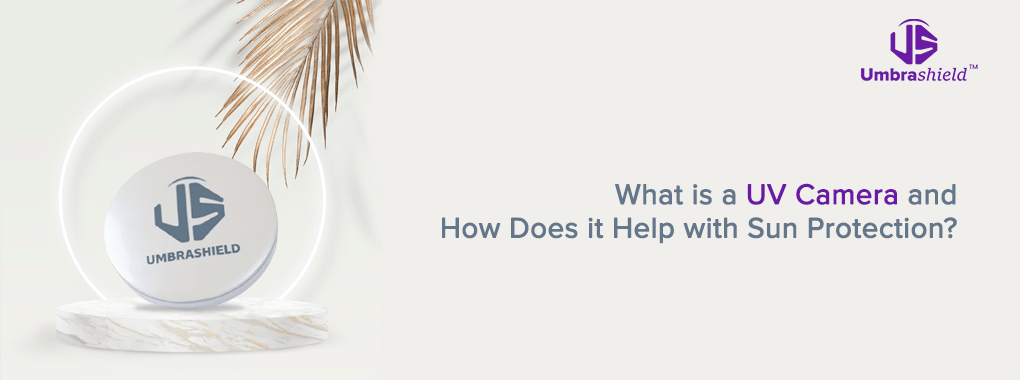
What is a UV Camera and How Does it Help with Sun Protection?
Introduction
The sun is both a life-giver and a silent adversary. While it provides essential vitamin D and warmth, its ultraviolet (UV) rays are notorious for causing skin damage, premature aging, and even skin cancer. Traditional sunscreen applications often leave us questioning whether we've covered our skin adequately. This is where UV cameras come into play—a game-changer in visualizing what the naked eye cannot see. These cameras reveal the unseen effects of UV radiation on our skin and how well our sun protection measures are working. But how exactly does a UV camera function, and why is it crucial for sun protection? Let’s explore this fascinating technology and its real-world impact.
Understanding UV Cameras
A UV camera is a specialized device designed to capture ultraviolet light, which lies beyond the visible spectrum of human eyesight. Unlike conventional cameras that operate within the range of visible light, UV cameras utilize specialized sensors and filters to detect UV radiation. These cameras can be used in dermatology, photography, and forensic sciences, but their most compelling use is in assessing skin damage and sunscreen application effectiveness.
By filtering out visible light and capturing only UV reflections, these cameras can show the uneven absorption of UV rays on the skin, revealing sun damage that remains hidden in regular lighting conditions.
How UV Cameras Help with Sun Protection
1. Revealing Sun Damage Before It’s Visible
UV cameras can detect deep-set sun damage before it manifests as wrinkles, dark spots, or skin cancer. Even if your skin appears healthy, a UV image might reveal underlying damage caused by years of unprotected sun exposure. This insight allows individuals to take proactive steps to protect their skin before irreversible harm occurs.
2. Assessing Sunscreen Effectiveness
One of the most remarkable uses of UV cameras is their ability to show how well sunscreen is applied. When sunscreen is applied correctly, it appears dark or black under a UV camera because it absorbs UV light rather than reflecting it. However, if there are gaps in coverage or the sunscreen has worn off, the camera reveals lighter patches, indicating unprotected areas. This is crucial in ensuring even and effective coverage, especially for children, athletes, and individuals with sensitive skin.
3. Encouraging Better Sun Protection Habits
Most people underestimate their sun exposure, especially on cloudy days or during short outdoor activities. When individuals see their skin under a UV camera, it often serves as a wake-up call. Schools, dermatologists, and health campaigns use UV imaging to educate people on the long-term consequences of UV exposure, leading to increased use of hats, UV-blocking sunglasses, and high-SPF sunscreens.
4. Identifying UV-Resistant Fabrics and Accessories
UV cameras can also test the effectiveness of UV-protective clothing and accessories. Some fabrics claim to have UV-blocking properties, but their actual efficiency can vary. By capturing UV-reflective and absorbent properties, these cameras help consumers make informed decisions about their clothing choices, ensuring better protection against harmful UV rays.
Who Benefits the Most from UV Cameras?
While everyone can benefit from UV camera insights, certain groups gain extra advantages:
● Outdoor workers: Construction workers, farmers, and sports professionals exposed to high UV levels daily.
● Parents and children: Ensuring proper sunscreen application on delicate skin.
● Dermatologists and skincare experts: Providing personalized skincare recommendations based on UV imaging.
● Aging individuals: Understanding cumulative sun damage and adjusting skincare routines accordingly.
● Beachgoers and travelers: Enhancing sun protection awareness in high-exposure environments.
The Future of UV Cameras in Sun Protection
The integration of UV cameras in everyday devices, such as smartphones and smart mirrors, is already underway. Imagine a future where your phone can scan your face and highlight areas needing sunscreen reapplication in real time. Additionally, advancements in AI-powered UV analysis could lead to personalized sun protection recommendations based on an individual's skin type, location, and sun exposure history.
Conclusion
A UV camera is more than just a technological marvel—it is a powerful educational and preventive tool in the fight against sun damage. By revealing the unseen effects of UV exposure and assessing the effectiveness of sunscreen and UV-resistant products, it encourages smarter sun protection habits. Whether you're a skincare enthusiast, an outdoor adventurer, or someone simply looking to maintain healthy skin, understanding UV exposure through these cameras can make a world of difference.
Next time you apply sunscreen, remember—what you see in the mirror isn’t the whole story. A UV camera might just show you the truth your skin has been hiding all along.

